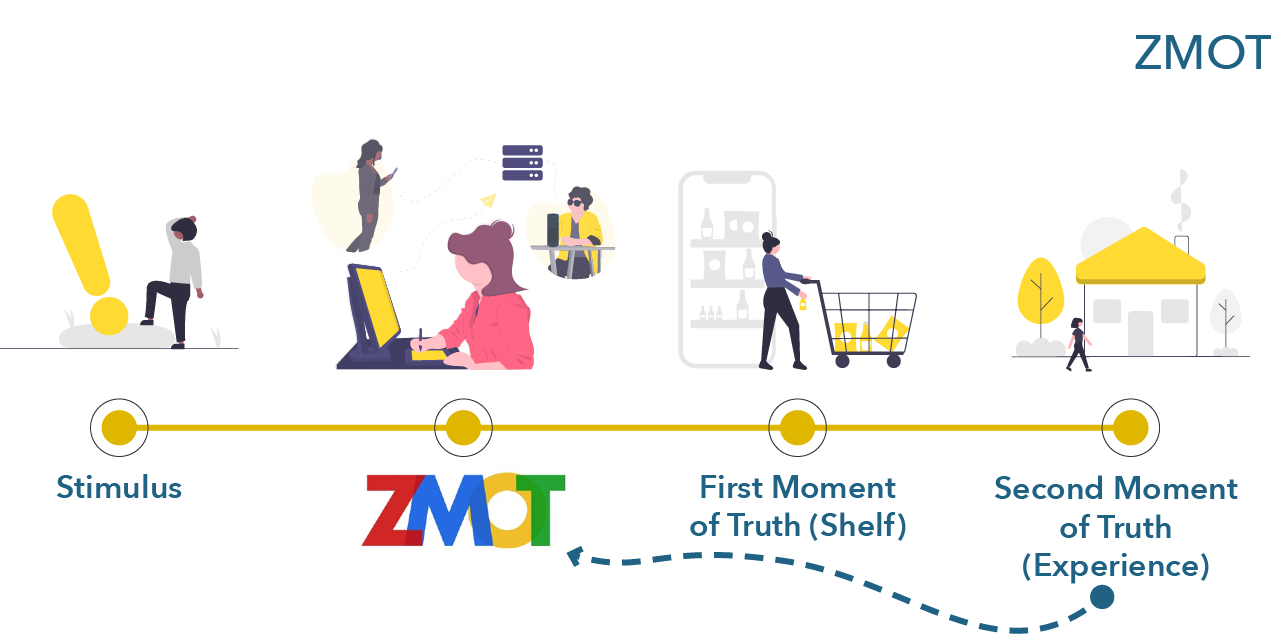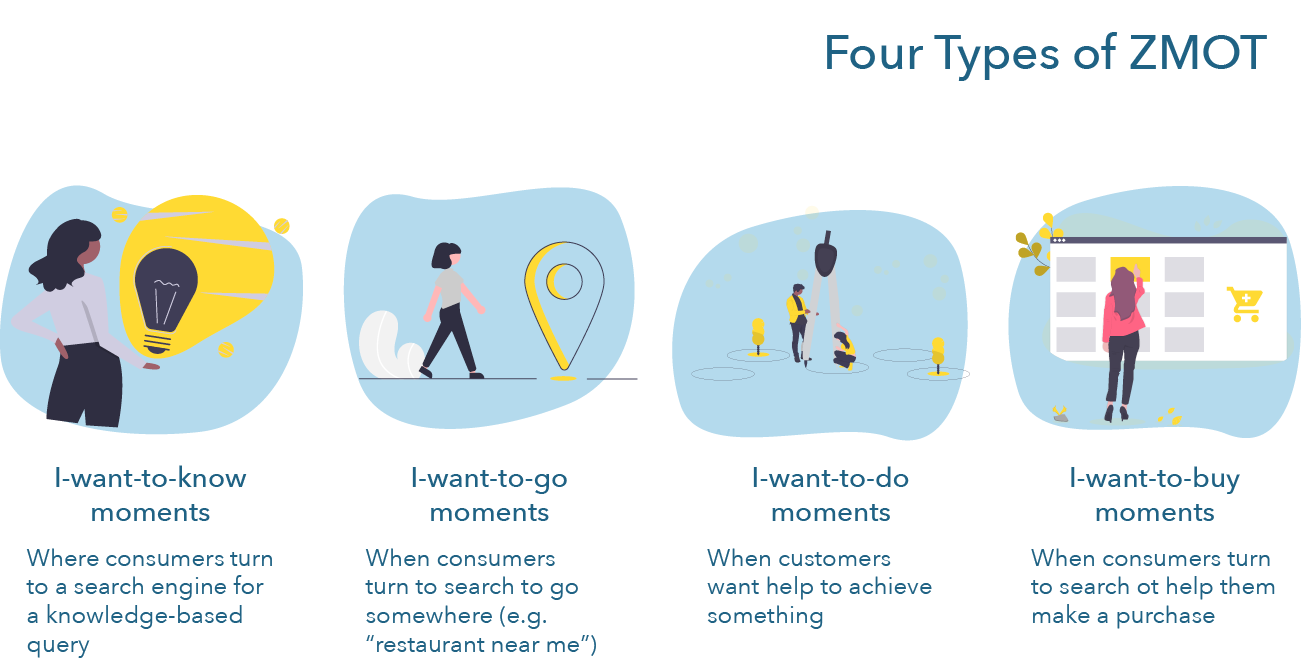Zero Moment of Truth
In an example of great content marketing for themselves (i.e., this concept helps sell Google products!), Google introduced in 2011 the concept of zero moment of truth (ZMOT), “a new decision-making moment that takes place a hundred million times a day on mobile phones, laptops, and wired devices of all kinds … that moment when you grab your laptop, mobile phone, or some other wired device and start learning about a product or service (or potential boyfriend) you’re thinking about trying or buying.” It turns out to be quite a useful concept to think about how consumers make purchases in the digital era.
Figure 2.6 ZMOT

A moment of truth is a contact with a brand or a product during which a consumer forms an impression (Carlzon 1989). To understand the ZMOT, it is important to contextualize it historically. Why is it called the “zero” moment of truth? Quite simply, prior to Google introducing this concept, there were already two moments of truth (Figure 2.6):
- First moment of truth: When a shopper notices a product in a shopping environment which influences their buying decision.
- Second moment of truth: When a consumer experiences a product following their purchase decision.
The ZMOT is the moment of truth—the context between a consumer and a brand—that happens prior to a shopper noticing a product in a shopping environment. Concretely, ZMOT “moments” could appear while
- performing online searches,
- talking with family and friends,
- comparison shopping,
- seeking information from a brand,
- reading product reviews,
- reading comments online, or
- starting to follow a brand.
In contrast, the first moments of truth happen while
- looking at a product on a shelf,
- reading a brochure at the store,
- talking to a salesperson,
- looking at a store display,
- talking with a customer service representative, or
- using a sample in-store.
According to Google, the essential characteristics of ZMOTs are that they happen online, when the consumer is in charge (and this relates to inbound marketing), and during multiway conversations. To capitalize on ZMOTs, Google recommends being present in moments that matter. By this, the marketing juggernaut means that you should have content and ads that respond to the needs, problems, and goals that consumers are typing in the form of search queries in a search engine. All of this requires, as you might have guessed by now, a deep understanding of your consumers and their journeys.
Google identifies four ZMOTs and briefly explain how these interact with journeys here. The four types, also shown in Figure 2.7, are the following:
- I-want-to-know moments, where consumers turn to a search engine for a knowledge-based query
- I-want-to-go moments, when consumers turn to search to go somewhere (e.g., “restaurant near me”)
- I-want-to-do moments, when consumers want help to achieve something (Fun fact! For a while there, the most searched ‘how-to’ video was ‘how to kiss.’ Now, isn’t that sweet!)
- I-want-to-buy moments, when consumers turn to search to help them make a purchase
Figure 2.7 Four Types of ZMOT

These are important conceptual tools. They represent opportunities for companies online to create content. These are not simply ways to understand how consumers use search engines and interact online. Rather, they are tools to help us create better content. What kind of content would you create for these four different ZMOTs?
